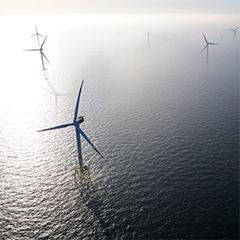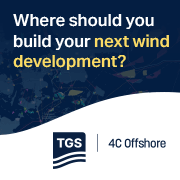The development of appropriate logistic concepts is a key factor for an economically successful offshore wind park. In the past the analysis and optimisation of these concepts have mostly focused on either the logistics for transport & installation (T&I) or operation and maintenance (O&M). Less attention has been paid to the important phase of commissioning. Yet it is this phase which is decisive for the rapid connection of the wind turbines and the feeding of their wind electricity into the grid.
The commissioning process takes up much more time than the actual installation of the wind turbine. The various process workflows, the ships used, and the operating limits mean the installation and commissioning processes often diverge (Figure 3). A logistics concept must therefore optimize its resources paying due consideration to the weather risks in order to minimize this divergence.
Methods used to analyse the weather risks
In the COAST research project funded by the German Federal Ministry for Economic Affairs and Energy, the WaTSS – Weather Time Series Scheduling method – was developed at Fraunhofer IWES, together with partners from industry and implemented into the COAST – Comprehensive Offshore Analysis and Simulation Tool – software. The COAST software computes the weather risk of project plans taking into account the local weather conditions and operational limitations1.
For the present investigation and the comparison, a specific model was developed for commissioning. Before the commissioning model is explained, the WaTSS analysis and the simulation modes of the COAST software will be briefly presented.
























